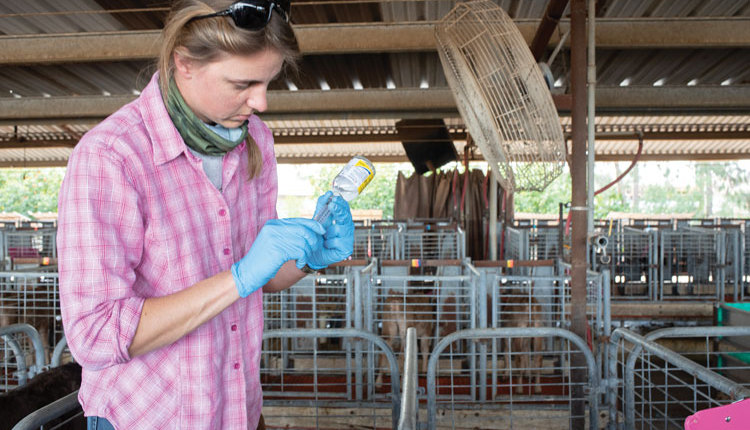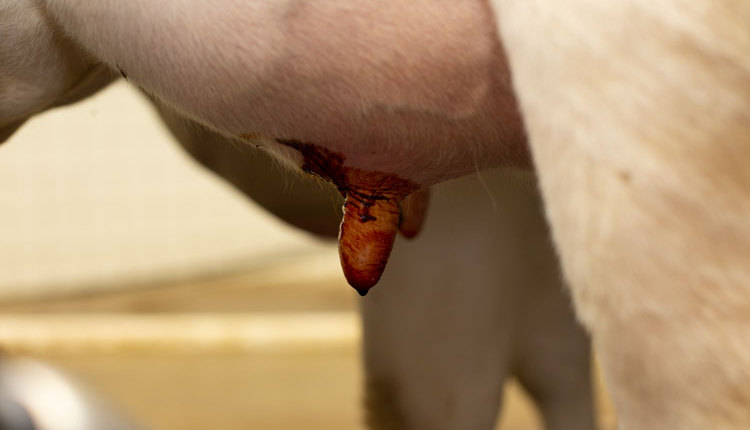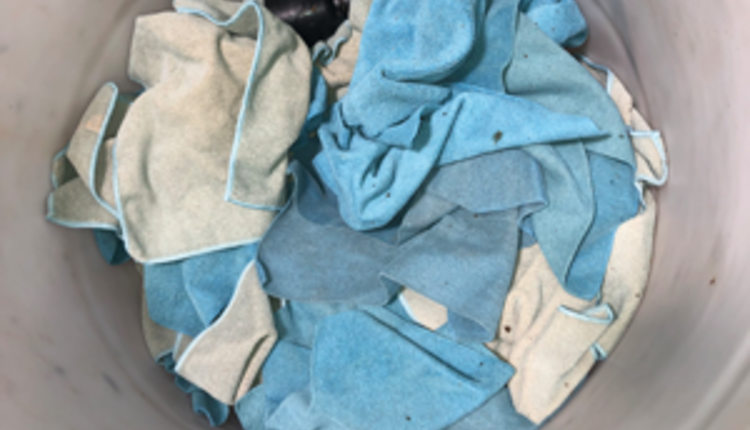The authors are with Quality Milk Production Services, Cornell University.

When choosing a liner to milk your cows, you are choosing a component that in reality is a one-size-fits-all proposition for the teats of all cows. The one liner that you choose has to milk all cows independent of teat size or shape without putting them at risk for mastitis.
What are the reasons dairy producers choose a specific liner for milking their cows? To better answer that question, we have been working with dairy operations with automated milking systems (AMS) that have multiple boxes in multiple pens. We also worked with farms that have younger animals at one farm and older animals at another farm.
With AMS, each box is its own independent milking unit, and, if there are multiple AMS boxes in multiple pens, then one could choose a different liner for each pen. If we have the opportunity to utilize more than one liner on the same dairy operation, how do we choose the correct liner for different groups of cows?
A big impact
Liner design and the interaction with teat dimension have a major impact on the overall milking performance and the comfort of the cow. Teat condition, specifically teat end condition, is a measurement that is often associated with the function of the liner.
Proper liner fit, when considering the condition of the teat after milking, includes short-term and long-term teat measurements. After each milking, there are short-term teat changes such as teat end hardness, ringing or swelling at the teat base, and color change. These changes may be associated with milking routine, automatic takeoff settings, and/or liner design to name a few. Medium to longer term changes are skin condition and teat end hyperkeratosis.
When you think of the liner, there are three key components to consider — design, composition, and function. How do the farm’s production and quality goals intersect with liner design, composition, and function?
The liner design includes the head, barrel, and short milk tube. The key aspect of the liner head is the diameter of the mouthpiece opening and the depth of the liner head. If the teat end does not engage the point of the barrel where the liner collapses but instead the teat end just barely passes through the bottom of the mouthpiece, then these teats will likely show hardness at the teat end after milking.
The hardness at the teat end is a form of congestion, and the more teat end congestion after milking, the longer the teat canal will remain open. These open teat ends are at a greater risk for mastitis. If the mouthpiece opening is too small, ringing at the teat base may occur.
Liners that have a large mouthpiece or head volume, along with increased vacuum at the end of milking, may lead to swelling at the teat base. This swelling may close off the annular fold at the teat base which, in turn, leads to incomplete milkout of the cow.
Begins with the fit
Proper liner fit leads to teats that are not at risk for mastitis after milking. This proper fit involves the interaction of the liner with the teat’s dimensions. What teat dimensions are important to know when choosing a liner?
More recently, we have been measuring the length of the teat. This measure takes place from the base of the udder to the teat end and includes the diameter of the teat at the teat base, the diameter of the teat midway down the teat, and the teat end shape.
Teat end shape is classified as flat, round, or pointed. The teat end shape is important to know because a high prevalence of pointed teats in a herd will lead to more hardness at the teat end and elevated levels of hyperkeratosis independent of the liner. The pointed teat end has less surface area to come in contact with the liner and thus the compression on the teat end is greater.
These measurements are all made prior to milking, on one front teat and one rear teat from 20% of cows in the herd or a minimum of 100 cows. The summarized data is then used to choose a liner that leads to optimal milking performance based upon the dimensions of the teat. Once the teat dimension data is known, a liner may be chosen that leads to the least teat end compression and mouthpiece chamber vacuum, creating a more comfortable milking experience for the cow.
On the farm
Recently, we measured teats for two different dairy operations. One dairy operation had younger animals at one farm (mainly first lactation and some second lactation) and older cows at a second farm. At the time of making the teat measurements, both locations were using the same liner. After summarizing the teat data, the current liner was still being used with the farm housing the older herd and a new liner was chosen for the farm with the younger cows. The younger animals had a narrower diameter teat and shorter teats compared to the older animals.
For the farm with the younger animals, we chose a liner with a smaller mouthpiece opening and shorter mouthpiece depth. The liner with the shorter mouthpiece depth allowed the teat ends to engage the barrel of the teat at the point of collapse. In follow-up teat evaluations, we noticed a reduced number of cows with short-term teat changes after milking.
On the second dairy operation, we had seen a high level of firmness at the teat end after milking, so we decided there was an opportunity to measure the teats and look into choosing a liner that fit better. The current liner at the time of making the teat measurements on the second dairy operation was a tapered barrel liner.
After summarizing the data, we found that the average teat length was longer than we had seen on other herds. We decided to choose a liner that did not have a tapered barrel, and upon routine evaluation of the teats, we again saw a reduction in cows with short-term teat changes after milking. We will continue to evaluate these herds to see the long-term impact on teat end condition.
Put into practice
Measuring the diameter and the length of the teats along with classifying the shape of the teat end are three aspects of the teat that are valuable in knowing when choosing the correct liner (or liners) to milk your herd of cows. It is important that the farm’s goals are known because milking unit on-time and milk flow rates are impacted when choosing a liner and setting it up to function properly.
The liner does have a major impact on cow comfort during milking, thus it is important that pulsation and vacuum settings are optimized for optimal liner function and performance. Knowing the dimensions of the cow’s teats within your herd is helpful when choosing a liner that will perform the best for the cow and meet the goals of the farm. Routine evaluation of short-term and long-term teat health will also allow you to determine if the chosen liner is putting the cow at risk for mastitis.





